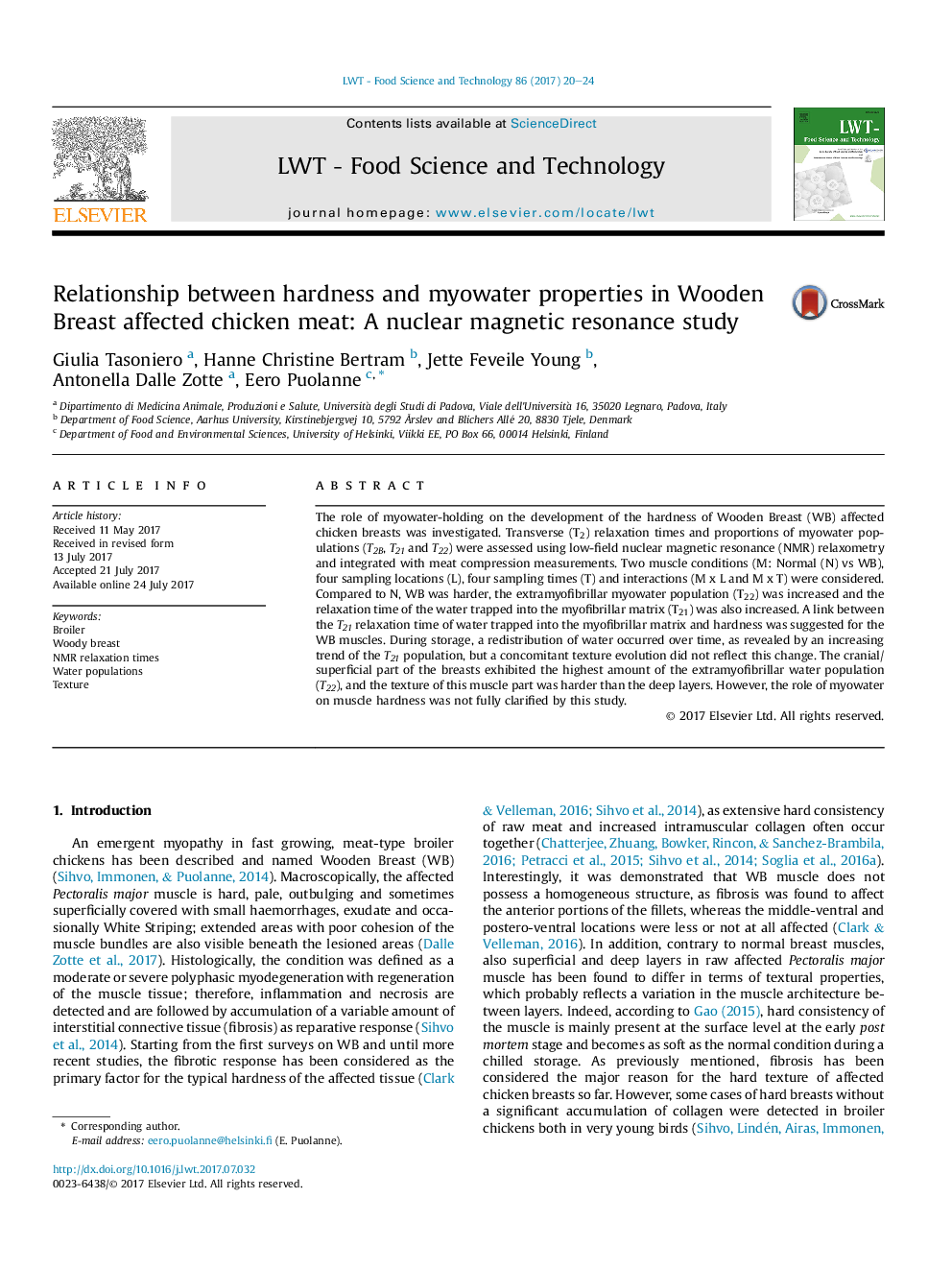| کد مقاله | کد نشریه | سال انتشار | مقاله انگلیسی | نسخه تمام متن |
|---|---|---|---|---|
| 5768654 | 1628513 | 2017 | 5 صفحه PDF | دانلود رایگان |
- T2B and T21 -relaxation times were longer in Wooden Breast than in Normal muscle.
- The amount of extramyofibrillar water was higher in Wooden Breast.
- In normal muscle, as the protein-bound water increased the hardness decreased.
- In Wooden Breast, as the intramyofibrillar water decreased the hardness increased.
- Wooden Breast in cranial/superficial area resulted in more extramyofibrillar water.
The role of myowater-holding on the development of the hardness of Wooden Breast (WB) affected chicken breasts was investigated. Transverse (T2) relaxation times and proportions of myowater populations (T2B, T21 and T22) were assessed using low-field nuclear magnetic resonance (NMR) relaxometry and integrated with meat compression measurements. Two muscle conditions (M: Normal (N) vs WB), four sampling locations (L), four sampling times (T) and interactions (M x L and M x T) were considered. Compared to N, WB was harder, the extramyofibrillar myowater population (T22) was increased and the relaxation time of the water trapped into the myofibrillar matrix (T21) was also increased. A link between the T21 relaxation time of water trapped into the myofibrillar matrix and hardness was suggested for the WB muscles. During storage, a redistribution of water occurred over time, as revealed by an increasing trend of the T21 population, but a concomitant texture evolution did not reflect this change. The cranial/superficial part of the breasts exhibited the highest amount of the extramyofibrillar water population (T22), and the texture of this muscle part was harder than the deep layers. However, the role of myowater on muscle hardness was not fully clarified by this study.
Journal: LWT - Food Science and Technology - Volume 86, December 2017, Pages 20-24
